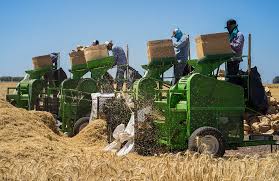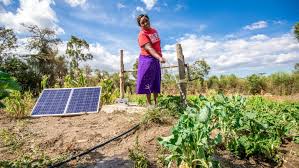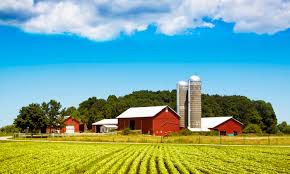Farm Power is an essential input in agriculture for timely field operations for increasing production and productivity of land. Farm power is used for operating different types of machinery like tillage, planting, plant protection, harvesting, and threshing machinery and other stationary jobs like operating irrigation equipment, threshers/shellers/cleaners/graders, etc.
Classification of Farm Power Sources in Agriculture
There are different sources of farm power available which are classified as:
- Human power
- Animal power
- Mechanical power (Tractors + Power tillers + Oil engines)
- Electrical power
- Renewable energy (Biogas + Solar energy + Wind energy)
Human Power in Agricultural Operations
Human power is the main source for operating small implements and tools at the farm. Stationary work like chaff cutting, lifting water, threshing, winnowing, etc., are also done by manual labor. An average man can develop maximum power of about 0.1 hp for doing farm work.
Animal Power for Farm Work
Power developed by an average pair of bullocks is about 1 hp for usual farm work. Bullocks are employed for all types of farm work in all seasons.
Besides bullocks, other animals like camels, buffaloes, horses, donkeys, mules, and elephants are also used at some places. The average force a draft animal can exert is nearly one-tenth of its body weight.
Read Also: Crossbreeding as Tool for Tropical Livestock Improvement
Mechanical Power in Modern Agriculture

Broadly speaking, mechanical power includes stationary oil engines, tractors, power tillers, and self-propelled combines. Internal combustion engine is a good device for converting liquid fuel into useful work (mechanical work).
These engines are two types: (1) Spark ignition engines (Petrol or Kerosene engine) (2) Compression ignition engines (Diesel engines).
The thermal efficiency of diesel engines varies from 32 to 38 percent, whereas that of petrol engines varies from 25 to 32 percent.
In modern days, almost all the tractors and power tillers are operated by diesel engines. Diesel engines are used for operating irrigation pumps, flour mills, cotton gins, chaff cutters, sugarcane crushers, threshers, winnowers, etc.
Electrical Power Applications in Farming
Electrical power is used mostly in the form of electrical motors on the farms. Motor is a very useful machine for farmers. It is clean, quiet, and smooth running.
Its maintenance and operation need less attention and care. The operating cost remains almost constant throughout its life. Electrical power is used for water pumping, dairy industry, cold storage, farm product processing, fruit industry, and many similar things.
Renewable Energy Utilization in Agriculture
It is the energy mainly obtained from renewable sources of energy like sun, wind, biomass, etc. Biogas energy, wind energy, and solar energy are used in agriculture and domestic purposes with suitable devices.
Renewable energy can be used for lighting, cooking, water heating, space heating, water distillation, food processing, water pumping, and electric generation. This type of energy is inexhaustible in nature.
Read Also: Breeds of Sheep and Breed Characteristics for Selecting Sheep
Solar Energy for Agricultural Processing and Irrigation

Most tropical countries are blessed with plentiful sunshine all the year round. Nigeria, for instance, receives about 490 W/m²/day. There is thus plenty of potential for the development of solar energy. Solar energy can be used for processing fruits and vegetables and for general drying of crops.
Another application is in solar-operated pumps. The sun’s rays are received in a collector and transmitted to a heat engine, which converts the solar energy into mechanical power to run a water or irrigation pump.
Solar power can also be converted into electricity directly by semiconductor devices called cells, or by producing steam to drive power-producing turbines. Other uses include solar dryers, lanterns, cookers, solar stills, solar refrigeration, solar lighting, etc.
Wind Energy for Farm Water Lifting
Wind power has been successfully used for raising water. The natural breeze or wind is used to turn the blades of a windmill, which in turn operates a pump to lift water. Wind power has also been used to generate electricity for use on the farm.
Water Power in Agricultural Operations
The energy available from water falling from one level to a lower level can be harnessed to run a few farm operations, such as feed grinding, or to operate a generating plant to provide electricity.
Biomass Energy Conversion for Farm Use
Different forms of biomass material can be converted into energy through gasification to produce gas, pyrolysis to produce liquid fuels, anaerobic digestion to produce biogas, etc.
Do you have any questions, suggestions, or contributions? If so, please feel free to use the comment box below to share your thoughts. We also encourage you to kindly share this information with others who might benefit from it. Since we can’t reach everyone at once, we truly appreciate your help in spreading the word. Thank you so much for your support and for sharing!

